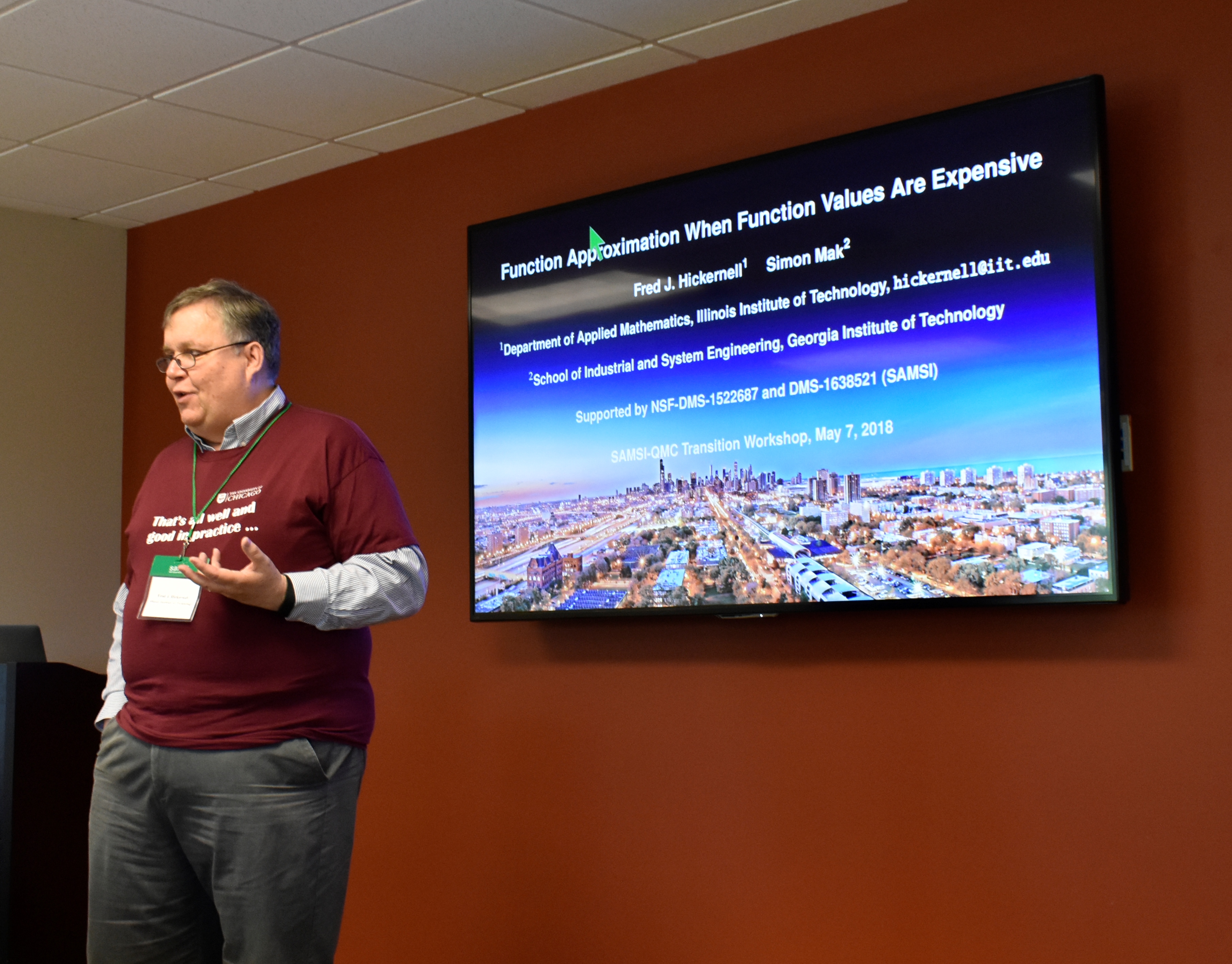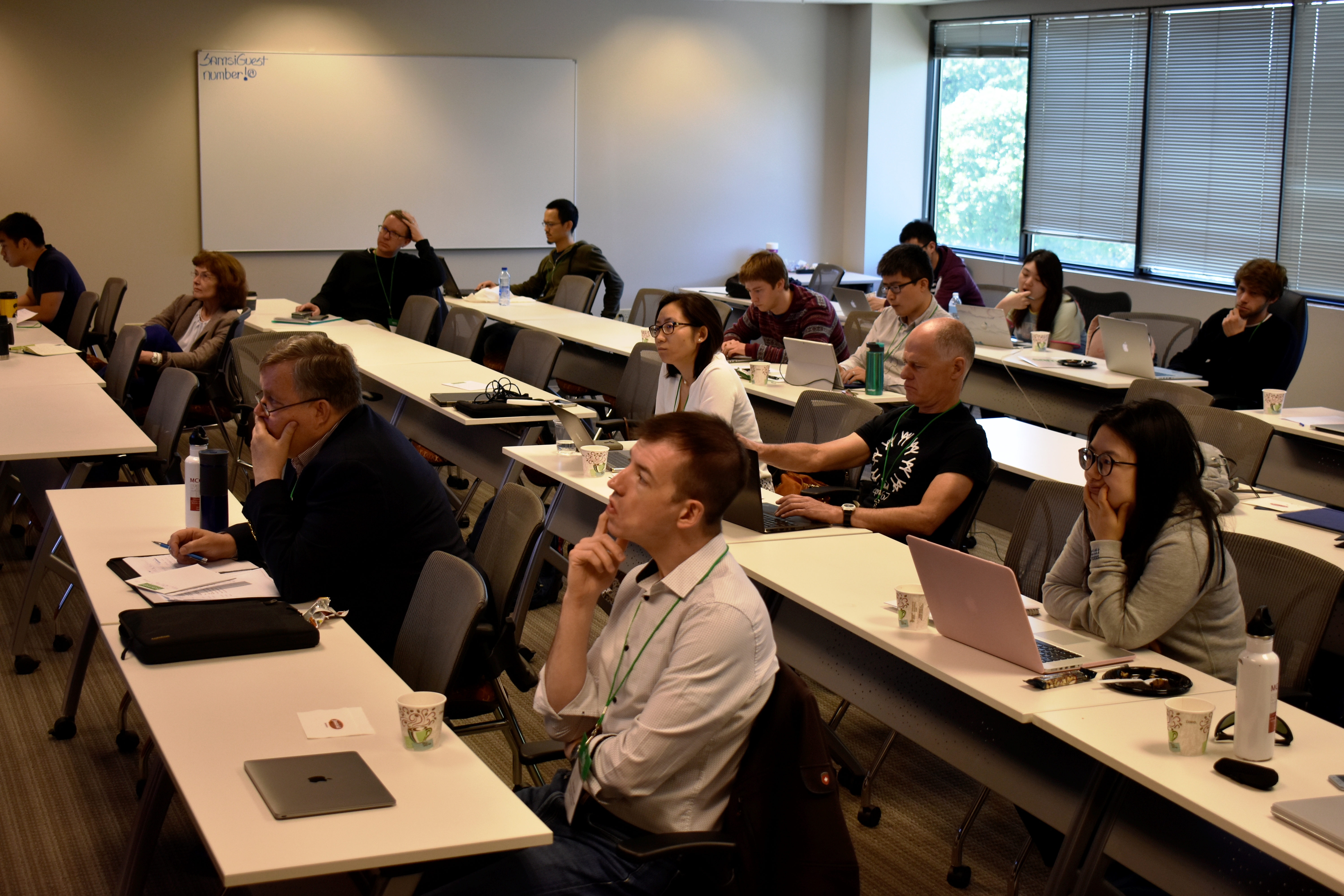
At the end of May, SAMSI hosted a transition workshop, bringing a close to their Program on Quasi-Monte Carlo and High-Dimensional Sampling Methods for Applied Mathematics (QMC).
The workshop was the culminating event of the year-long QMC program and brought together more than 100 researchers from around the world to discuss a multitude of ways in which QMC methodologies could be used to improve such things as data sampling; process efficiency and troubleshooting systems; and how these concepts can be integrated into machine learning or computer-based technologies.
“The SAMSI QMC program, small but highly productive, set a perfect example of SAMSI’s mission: Mathematicians and statisticians working together to create new foundations and computational methods, with a future view towards solving challenging technological problems: making power grids more reliable by preventing break downs, and making nuclear reactors safer by tightly monitoring the nuclear reactions (criticality),” said Ilse Ipsen, program organizer and former SAMSI associate director. Ipsen is also a mathematics professor at NC State University
The QMC year began with an opening working last August, followed by mid-term workshops at Duke University and the Alan Turing Institute in the UK, and officially ending with this transition workshop.
Program participants from all over the world (Austria, Australia, Canada, Germany, the UK, and the US) reviewed the impressive accomplishments of ten productive working groups over the past year, which included:
- fast methods for sampling reliably and efficiently;
- validation procedures for guaranteeing that the samples are indeed representative;
- robust methods for performing effective sampling under less than ideal (uncertain, noisy) conditions; and
- user-friendly software for automating the complex sampling processes, and visualizing the location of the samples.
“QMC has a rich and deep theory that has found a handful of extremely suitable use cases, but I am convinced that there are more to discover,” said Art Owen, a QMC program leader and a statistics professor at Stanford University. “The SAMSI program built bridges to US based researchers, especially in engineering related applications.”

The transition workshop was an opportunity for the program researchers to reconvene and to discuss their findings from the past year in their research. It also gave the program participants a way to reconnect with colleagues and discuss future collaborations about their research.
“During the lively discussion sessions it was often hard to tell who was a mathematician and who a statistician — an indication of the close collaborations and the growing synthesis of mathematics and statistics,” said Ipsen. “The workshop participants are now looking beyond the SAMSI program, by organizing future workshops and continuing their virtual webex meetings — whatever it takes to ensure the thriving of the research community formed during the SAMSI QMC year.
“The QMC Program has fulfilled its main objective: Strengthening the community of researchers who work on Quasi-Monte Carlo methods and the related area of Probabilistic Numerics; and raising the visibility of these vital research areas in the US,” said Ipsen.
To see all of the workshops and what were presented during this program, visit the QMC web page at: /qmc.